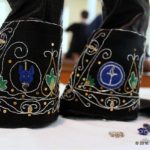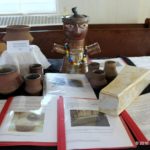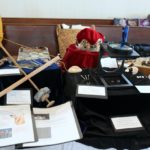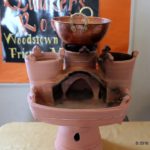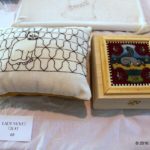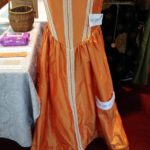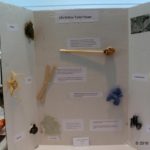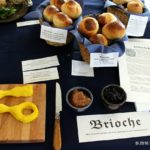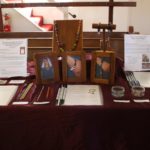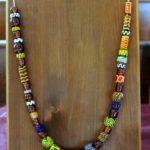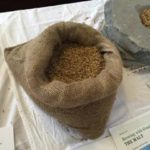King's and Queen's Arts and Sciences Championship
On February 6th, in the Shire of Barren Sands, an impressive array of artisans and craftspeople convened to compete for the positions of King’s and Queen’s Arts and Sciences Champions. Entries included examples of the vast range of Eastern arts, including pottery, metal-working, period clothing, syrups and sugar work, illumination, research on period hygiene practices, a comparative analysis of period bread-making, and cooking in a working model of a period ceramic oven.
Lady Cassandra Blondel de Seint Alban kindly permitted the Gazette to use her photos of the many lovely works on display. The images below are merely a sample of the day’s excellent works.
By the end of the first round of judging, the following people were chosen for the second round:
- Elysabeth “Lissa” Underhill
- Magnus hvalmagi
- Brunissende Dragonette
- Alesone Gray of Cranlegh
- Kataryn “Kit” Mercer
- Elena Hylton
- Galefridus Peregrinus
After interviewing all of the seven finalists, their Majesties chose Elysabeth Underhill and Magnus hvalmagi as their Champions.
Mistress Elysabeth, Queen’s Arts and Sciences Champion, recreated three glass bead strings from the Portway Anglo-Saxon Cemetery using data from the Portway excavation report. She placed the bead strings in historical context by comparing and contrasting them using research she had done on Anglo-Saxon bead typologies, the social meaning of beads in Anglo-Saxon England, and the meaning of grave goods in Anglo-Saxon burials.
Master Magnus, the King’s Champion, describes his work as follows: “In 1555, the Swedish archbishop Olaus Magnus published Historia de Gentibus Septentrionalibus (History of the Northern Peoples), an encyclopedic work detailing all facets of existence in mid-16th-century Scandinavia. Included in the text are writings about the production of malt and beer, but they lack the detail needed to readily redact the recipes. Using supporting information gleaned from contemporary rural Norwegian farmhouse brewing – the kind that grandpa and great-grandpa would’ve done in the Old Country – as well as numerous other sources, I fill in the gaps and attempt to establish plausible connections that allow the contemporary to inform the period practice, in order to take my best shot at recreating the infrastructure and process indicated in the text. The project is broken into 3 parts: Part I, the recreation of the malt (including a malting kiln); Part II, the reconstruction of a rotary hand quern; Part III, the development of a coherent recipe and subsequent beer.”

